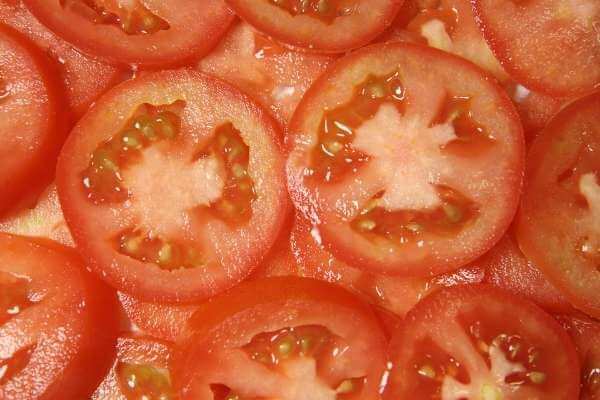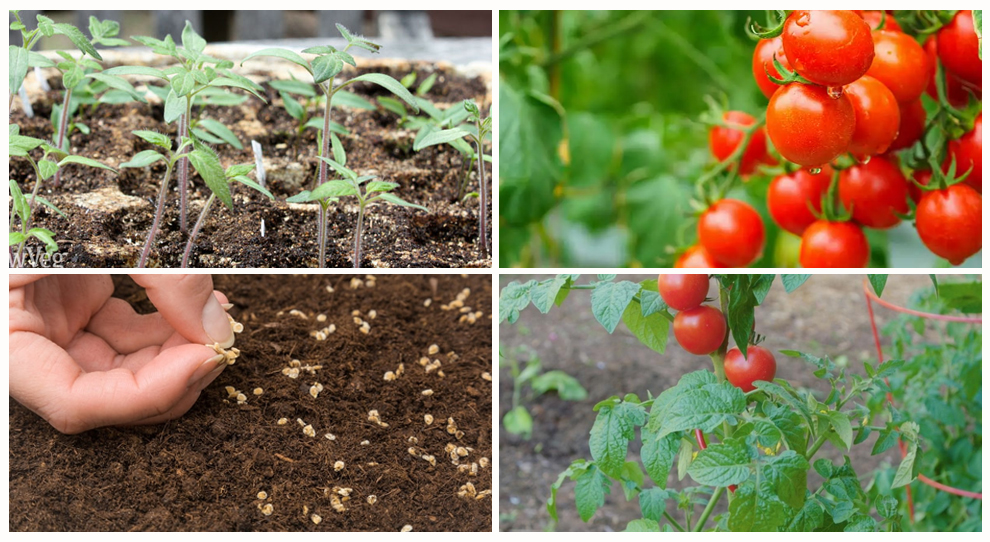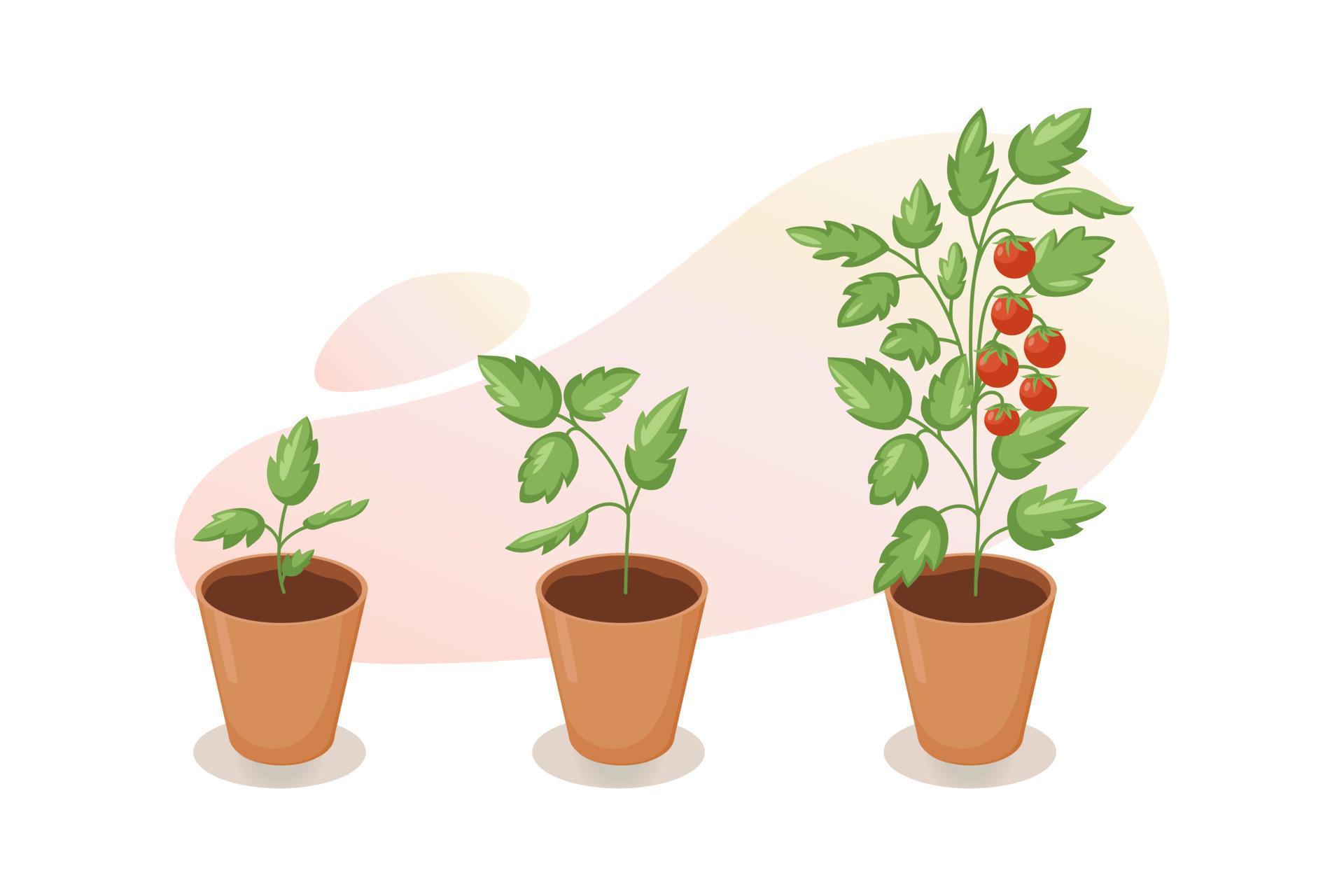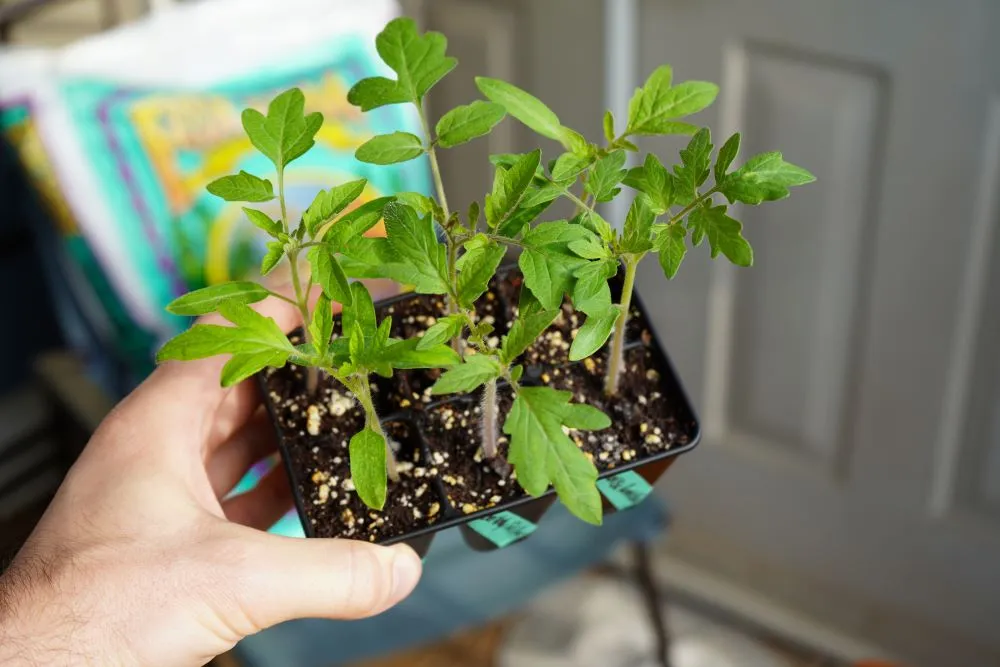Discover the Magic of Regenerating Tomatoes from Scraps
Growing tomatoes from a fresh tomato is a simple and rewarding process that can be enjoyed by gardeners of all levels. This method not only reduces food waste but also provides an opportunity to enjoy a bountiful harvest of delicious, homegrown tomatoes. By regenerating tomatoes from scraps, individuals can experience the satisfaction of watching their efforts come to fruition, while also developing a deeper appreciation for the natural world.
The process of growing tomatoes from a fresh tomato is relatively straightforward. It begins with selecting a healthy, disease-free tomato with desirable characteristics, such as flavor, texture, and size. The seeds from this tomato are then extracted, cleaned, and prepared for planting. With proper care and attention, these seeds can be coaxed into producing robust, healthy seedlings that will eventually mature into fruit-bearing plants.
One of the primary benefits of growing tomatoes from a fresh tomato is the ability to reproduce the exact same variety. This is particularly useful for gardeners who have discovered a favorite tomato variety and wish to propagate it. By regenerating tomatoes from scraps, individuals can ensure a consistent supply of their preferred variety, without the need for external seed sources.
In addition to the benefits of reproducing a specific variety, growing tomatoes from a fresh tomato also offers a unique opportunity for experimentation and discovery. By trying out different tomato varieties and regeneration techniques, gardeners can gain a deeper understanding of the complex relationships between seeds, soil, climate, and other environmental factors. This knowledge can be used to refine and improve their gardening skills, leading to more successful and productive harvests.
For those interested in trying their hand at growing tomatoes from a fresh tomato, the process is relatively simple. With a little patience, attention to detail, and practice, anyone can successfully regenerate tomatoes from scraps and enjoy the many rewards that come with it. Whether you’re a seasoned gardener or just starting out, this innovative approach to growing tomatoes is definitely worth exploring.
Choosing the Right Tomato Variety for Regeneration
When it comes to growing tomatoes from a fresh tomato, selecting the right variety is crucial for success. With hundreds of tomato varieties to choose from, it can be overwhelming to decide which one to use. However, by considering a few key factors, you can increase your chances of growing healthy, disease-resistant tomato plants.
One of the most important factors to consider when choosing a tomato variety for regeneration is disease resistance. Look for varieties that are resistant to common tomato diseases such as fusarium wilt, nematodes, and tobacco mosaic virus. This will help ensure that your plants remain healthy and productive throughout the growing season.
Another important factor to consider is germination rate. Some tomato varieties have a higher germination rate than others, which can affect the success of your regeneration efforts. Look for varieties with a high germination rate, typically above 80%, to increase your chances of successful regeneration.
Climate is also an important consideration when choosing a tomato variety for regeneration. If you live in a cool or temperate climate, look for varieties that are specifically bred for cooler temperatures. These varieties will be more tolerant of cooler temperatures and will produce fruit more reliably in your climate.
Some popular tomato varieties for regeneration include ‘Brandywine’, ‘Cherokee Purple’, and ‘San Marzano’. These varieties are known for their high germination rates, disease resistance, and adaptability to different climates. However, it’s always a good idea to research and experiment with different varieties to find the one that works best for you.
When selecting a tomato variety for regeneration, it’s also important to consider the characteristics of the fruit you want to produce. Do you want to grow cherry tomatoes, beefsteak tomatoes, or something in between? Different varieties will produce different types of fruit, so make sure to choose a variety that meets your needs.
By choosing the right tomato variety for regeneration, you can set yourself up for success and enjoy a bountiful harvest of delicious, homegrown tomatoes. Whether you’re a seasoned gardener or just starting out, selecting the right variety is an important step in the process of growing tomatoes from a fresh tomato.
Preparing the Tomato Scraps for Planting
Once you have selected a suitable tomato variety for regeneration, the next step is to prepare the tomato scraps for planting. This involves extracting the seeds from the tomato, removing excess pulp, and drying the seeds for optimal germination.
To extract the seeds, start by cutting the tomato in half and scooping out the seeds and pulp. Place the seeds and pulp in a bowl of water and let it sit for 24 hours. This will help to break down the pulp and release the seeds. After 24 hours, strain the mixture through a fine-mesh sieve to separate the seeds from the pulp.
Next, remove excess pulp from the seeds by rinsing them with water. You can also use a soft-bristled brush to gently scrub away any remaining pulp. This will help to prevent mold and bacterial growth, which can inhibit germination.
After removing excess pulp, dry the seeds for optimal germination. You can do this by spreading the seeds out in a single layer on a paper towel or cloth. Let the seeds air dry for 24-48 hours, or until they are completely dry. This will help to prevent moisture from accumulating and inhibiting germination.
Once the seeds are dry, you can store them in an airtight container until you are ready to plant them. Make sure to label the container with the variety of tomato and the date you extracted the seeds.
When you are ready to plant the seeds, make sure to plant them in a well-draining seed starting mix. Plant the seeds about ¼ inch deep and 1-2 inches apart. Water the seeds gently but thoroughly, and keep the soil consistently moist but not waterlogged.
By following these steps, you can successfully prepare your tomato scraps for planting and increase your chances of growing healthy, robust tomato seedlings. Whether you are a seasoned gardener or just starting out, this process is an essential step in the process of growing tomatoes from a fresh tomato.
Creating the Perfect Growing Conditions for Your Tomato Seedlings
Once you have prepared your tomato scraps for planting, the next step is to create the perfect growing conditions for your tomato seedlings. This includes providing the right temperature, humidity, light, and soil requirements for optimal growth.
Temperature is a critical factor in the growth of tomato seedlings. Most tomato varieties prefer daytime temperatures between 65-70°F (18-21°C) and nighttime temperatures around 55-60°F (13-15°C). You can use a thermometer to monitor the temperature and adjust it as needed.
Humidity is also important for tomato seedlings. A humid environment helps to prevent moisture stress and promotes healthy growth. You can cover the seedlings with a clear plastic bag or a cloche to create a mini-greenhouse effect and maintain a humid environment.
Light is essential for tomato seedlings, but too much light can be detrimental. Most tomato varieties prefer bright, indirect light. You can place the seedlings near a sunny window or use grow lights to provide the necessary light.
Soil requirements are also crucial for tomato seedlings. Use a well-draining seed starting mix that is specifically designed for tomatoes. Avoid using regular potting soil, as it can compact and prevent proper drainage.
To create a mini-greenhouse effect, you can use everyday materials such as plastic bottles, cardboard boxes, or glass jars. Simply place the seedlings inside the container and cover it with a clear plastic bag or a cloche. This will help to maintain a humid environment and promote healthy growth.
Another innovative way to create a mini-greenhouse effect is to use a cold frame. A cold frame is a bottomless box that is placed over the seedlings and covered with a clear plastic or glass top. This helps to trap heat and maintain a humid environment, promoting healthy growth and extending the growing season.
By providing the right growing conditions, you can help your tomato seedlings to grow strong and healthy. Remember to monitor the temperature, humidity, light, and soil requirements, and adjust them as needed to create the perfect environment for your tomato seedlings.
Nurturing Your Tomato Seedlings to Maturity
Once your tomato seedlings have germinated and are growing well, it’s essential to provide them with the right care to ensure they reach their full potential. This includes fertilizing, pruning, and training the plants for maximum yield.
Fertilizing your tomato seedlings is crucial for promoting healthy growth and fruit production. Use a balanced fertilizer that is specifically designed for tomatoes, and follow the instructions on the label for application rates. You can also use compost or well-rotted manure to provide nutrients to the soil.
Pruning your tomato seedlings is also important for promoting healthy growth and fruit production. Remove any weak or spindly growth, and trim back the tips of the stems to encourage bushy growth. This will help to promote more fruiting and prevent the plants from becoming leggy.
Training your tomato seedlings is also essential for maximum yield. Use tomato cages, trellises, or stakes to support the plants as they grow. This will help to keep the plants upright and promote more fruiting.
Common pests and diseases can also affect your tomato seedlings, so it’s essential to take steps to prevent them. Keep an eye out for signs of pests such as aphids, whiteflies, and hornworms, and use organic or chemical controls as needed. Regularly inspect your plants for signs of disease such as yellowing leaves, black spots, or powdery mildew, and take action promptly if you notice any problems.
Some common pests and diseases that can affect tomato seedlings include:
- Aphids: small, soft-bodied insects that can transmit plant viruses
- Whiteflies: small, winged insects that can transmit plant viruses
- Hornworms: large, green caterpillars that can eat holes in leaves and fruit
- Septoria leaf spot: a fungal disease that causes yellowing leaves and black spots
- Early blight: a fungal disease that causes yellowing leaves and black spots
By following these tips, you can help your tomato seedlings to grow strong and healthy, and enjoy a bountiful harvest of delicious tomatoes.
Transplanting Your Tomato Seedlings Outdoors
Once your tomato seedlings have reached a height of 6-8 inches and have 2-3 sets of leaves, it’s time to transplant them outdoors. This process is called “hardening off” and it’s essential to do it gradually to prevent shocking the plants.
To harden off your tomato seedlings, start by moving them to a shaded area outdoors for 1-2 hours a day. Gradually increase the amount of time they spend outdoors over the next 7-10 days, until they are spending 6-8 hours a day in direct sunlight.
When choosing a location for your tomato seedlings, make sure it receives full sun (at least 6 hours of direct sunlight) and has well-draining soil. Tomatoes prefer a slightly acidic soil pH, between 6.0 and 6.8.
Space your tomato seedlings 18-24 inches apart, depending on the variety. Some indeterminate varieties can grow quite large, so make sure to provide enough space for them to spread out.
When transplanting your tomato seedlings, make sure to handle them gently to avoid damaging the roots. Dig a hole that is the same depth as the pot and twice as wide. Add a handful of compost or well-rotted manure to the hole to provide nutrients to the soil.
Place the tomato seedling in the hole and gently firm the soil around the roots. Water the soil well to settle the soil and provide enough moisture to the roots.
After transplanting your tomato seedlings, keep the soil consistently moist but not waterlogged. Tomatoes need about 1-2 inches of water per week, either from rainfall or irrigation.
By following these tips, you can successfully transplant your tomato seedlings outdoors and enjoy a bountiful harvest of delicious tomatoes.
Troubleshooting Common Issues When Growing Tomatoes from Fresh Fruit
While growing tomatoes from fresh fruit can be a rewarding experience, there are some common issues that may arise. In this section, we will address some of the most common problems and provide solutions and troubleshooting tips to overcome them.
Low Germination Rates: One of the most common issues when growing tomatoes from fresh fruit is low germination rates. This can be caused by a variety of factors, including old or poor-quality seeds, inadequate moisture, and insufficient light.
Solution: To improve germination rates, make sure to use fresh and high-quality seeds. Provide adequate moisture and light, and maintain a consistent temperature between 65-70°F (18-21°C).
Weak Seedlings: Weak seedlings can be a problem when growing tomatoes from fresh fruit. This can be caused by a lack of light, inadequate nutrients, and poor soil quality.
Solution: To strengthen seedlings, provide them with adequate light and nutrients. Use a well-balanced fertilizer and maintain good soil quality. Prune the seedlings to encourage bushy growth and prevent them from becoming leggy.
Disease Susceptibility: Tomatoes are susceptible to a variety of diseases, including fungal infections, bacterial spot, and tobacco mosaic virus.
Solution: To prevent disease, maintain good hygiene practices, such as washing your hands before handling the plants and removing any infected leaves or stems. Use crop rotation and companion planting to reduce the risk of disease. Apply fungicides or bactericides as needed to prevent the spread of disease.
Pests: Pests such as aphids, whiteflies, and hornworms can be a problem when growing tomatoes from fresh fruit.
Solution: To control pests, use organic or chemical controls as needed. Encourage beneficial insects, such as ladybugs and lacewings, which prey on pests. Use physical barriers, such as fine-mesh screens, to prevent pests from reaching the plants.
By following these troubleshooting tips, you can overcome common issues and enjoy a successful harvest of delicious tomatoes.
Enjoying Your Bountiful Harvest: Tips for Prolonging the Tomato Season
Congratulations You have successfully grown delicious tomatoes from fresh fruit. Now, it’s time to enjoy your bountiful harvest and make the most of your tomato season. In this section, we will provide tips on how to prolong the tomato season, including how to extend the harvest period, preserve tomatoes for later use, and plan for future crops.
Extending the Harvest Period: To extend the harvest period, make sure to provide your tomato plants with optimal growing conditions, including adequate water, nutrients, and support. You can also use techniques such as pruning and training to encourage the plants to produce more fruit.
Preserving Tomatoes for Later Use: There are several ways to preserve tomatoes for later use, including canning, freezing, and dehydrating. Canning is a great way to preserve tomatoes, as it allows you to enjoy them throughout the year. Freezing is another option, as it helps to preserve the flavor and texture of the tomatoes. Dehydrating is also a great way to preserve tomatoes, as it removes the water content and helps to prevent spoilage.
Planning for Future Crops: To plan for future crops, make sure to save some of your tomato seeds from your current harvest. You can store them in an airtight container in a cool, dry place. This will allow you to grow more tomatoes from the same variety in the future.
Additionally, you can also consider growing other varieties of tomatoes to extend the harvest period. Some varieties, such as cherry tomatoes and patio tomatoes, are specifically bred for their compact growth habit and can be grown in containers. These varieties can be harvested in as little as 60 days and can provide a continuous supply of fresh tomatoes throughout the season.
By following these tips, you can enjoy a bountiful harvest of delicious tomatoes and make the most of your tomato season. Whether you’re a seasoned gardener or just starting out, growing tomatoes from fresh fruit is a fun and rewarding experience that can provide you with a continuous supply of fresh, delicious tomatoes.







